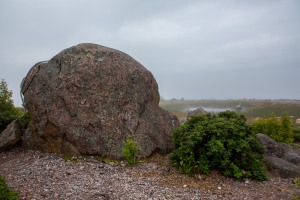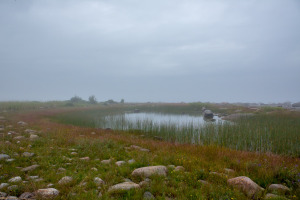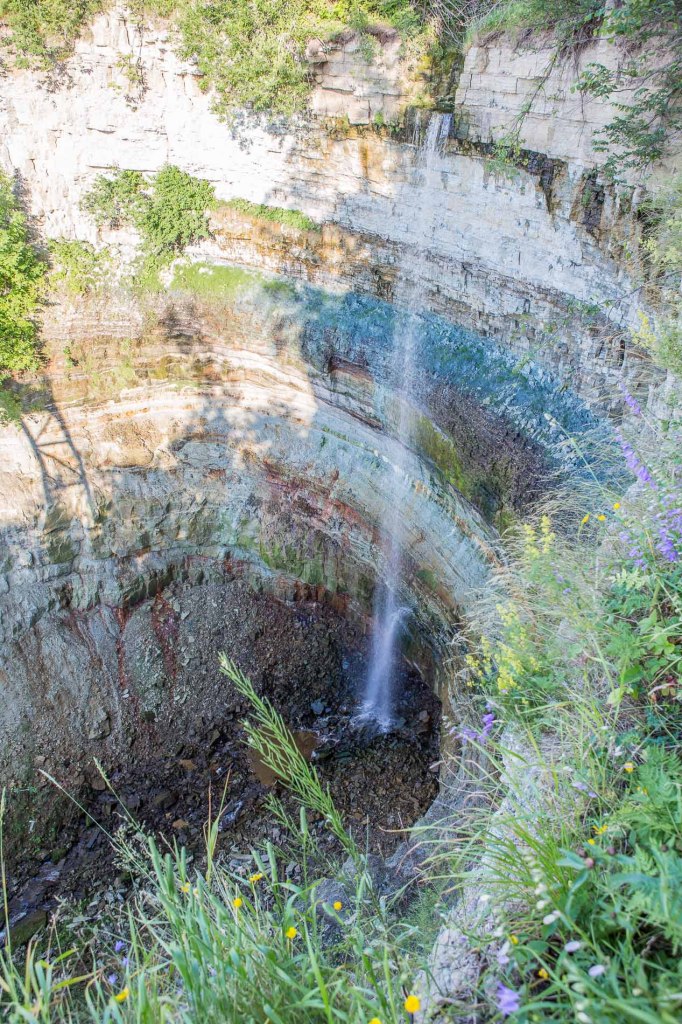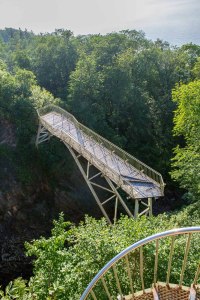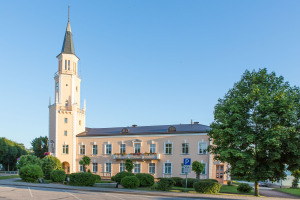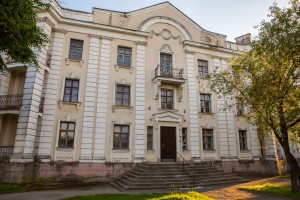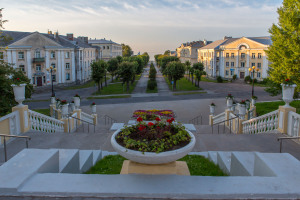Country: Estonia
Distance travelled: approximately 220km
Weather: overcast and foggy clearing in the afternoon
I got up this morning with the intention of doing some washing as I didn’t want it to get out of hand again and I hadn’t had an opportunity since before we went to Saint Petersburg. Mark was feeling like he needed a doona day so it wasn’t hard to convince him to go back to bed and stay out of my way.
While I was waiting for the washing machine to do its thing, I got all enthusiastic and cleaned the dash of several weeks of accumulated dust and swept the floor. Down sweeping around the cab foot well I came across the lost SD card from the dash camera. Great! We won’t have to buy another. It must have been shaken through the vent system as we drove along the rough track out to the camping ground last night. After a while Mark caught my enthusiasm and went out to clean the windscreen of bugs with the new dry car wash we had bought yesterday, it worked well and we can see clearly again although I don’t suppose it will stay that way for long.
In another spurt of enthusiasm, I rode my bicycle back around to the sign we had seen on the way in. I wanted to see where the erratic boulders (rocks relocated by glaciers) this National Park was famed for were located. I was just heading back when it started to rain, not too bad as I was under tree cover. The rain seemed to ease as I reached the carpark again so I decided to explore some more. A poor choice as just a few minutes later it began pouring even harder than before.
Back at the van, I stripped off my wet clothes and was finishing off several tasks when I heard a fog horn from out to sea. Amazingly, after the rain, the thickest fog had rolled in and we could barely see to the other end of the carpark, not more than about twenty meters. The sound of fog horns continued for more than an hour, several different tones with one deep toned horn in particular sounding off with regularity. Eventually we decided that it was clear enough to walk out along the spit to the Purekkari Boulder, an erratic boulder with a circumference of 23.4m and a height of 4.7m. For some reason a rope had been fixed to the top to aid in climbing but you would have to have been a monkey to manage it.
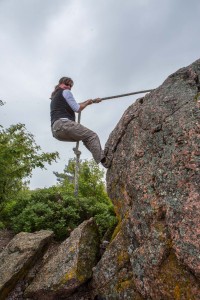
We returned to the van after a few atmospheric photos taken in the slowly clearing fog, had our lunch and decided, at 3pm, that it was probably time to head onward. We programmed the GPS with a possible LPG source from Autoroute and set off eastward. While on the highway we repeatedly saw signs indicating that the towns we were passing had wifi so eventually we stopped at one to check a few things. Of all the good news, Mark had been paid! Now we would have some cash coming into the bank instead of the continuous outward flow typical of the last six months. And we could pay off the credit card which we had used to get the solar panels fitted to the van.
Finding our LPG supply, we filled up at an automatic service station, no attendant, just insert your credit card and press buttons. They are generally cheaper than places with an attendant however we pay via fees on the card instead. But we needed the gas and the diesel. As we drove away from the service station, a dead end road sign was spotted. It seemed a bit strange, this was a wide smooth road and cars were heading the other direction. Another sign appeared every kilometer, with decreasing distances indicating when the road ended. Around another bend, we found the reason. Roadworks with no detour, the entire pavement removed and men working on the replacement.
A small side road beckoned us, heading generally north which was approximately the direction we wanted to go. The land here about reminds me of the Netherlands, quite level, but with the many trees of Finland. Our road, much narrower and rougher now, wound through the countryside, through occasional fields of canola but the crop of choice appeared to be hay. A true case of make hay while the sun shines since we had read Estonian winters are quite unpleasantly cold. The massive wood piles by most houses bore this out, most seemed bigger than those we had seen in Scandinavia. The scattered groups of houses, although occasionally needing a lick of paint, all sat in immaculately mowed yards with bright flower gardens.
More wind turbines loomed, the first we’d seen for several countries, indicating our vicinity to the coast and then we drove into Kunda, a small town doing its best to look good. A supermarket visit was called for, we needed more piim (milk) as I had nearly finished the last lot from the vending machine in Tallinn. We ended up coming out with a bag of milk and two alcopop style drinks at €0.76 each. Our proximity to the Russian border was evident with quite a lot of Cyrillic text all though the supermarket.
Our destination had been the Ontika Limestone Cliff, part of the Baltic Clint which is an erosional limestone escarpment, but I had been lead astray by an online image which I had interpreted as the kind of formations found in a wet limestone cave. I was quite disappointed to find out upon our arrival that the image was of a frozen waterfall. The waterfall, too, turned out to be a drainage overflow. And to top it off the viewing platform was out of order. I’m not sure I would have made use of it anyway since it lay at the bottom of two very steep spiral staircases with mesh steps.
After this disappointment we decided to drive to Sillamäe, a ex-soviet town we had earlier decided against visiting since it was a little out of our way. Frustratingly this brought us to less than 200km from Saint Petersburg although there was no way for us to cross the border.
Wikipedia states:
During the Soviet regime in Estonia, Sillamäe remained a closed town due to the secrecy and security measures related to the uranium production activities at the local plant. Uranium production at Sillamäe continued to supply nuclear materials for the Soviet nuclear power plants and weapon facilities until 1989. In the years of 1950–1989, the plant produced about 98,681 tonnes of uranium (mostly as U3O8) and 1354.7 tonnes of enriched uranium. During its operations, the Sillamäe plant dumped the processing wastes into a tailing pond at the north-western part of Sillamäe near the Baltic Sea shoreline. By the 1990s, the pond presented a serious ecological hazard due to leaching of radioactive and other harmful particulates and dissolved materials into Baltic Sea. In the 2000s, measures were undertaken to secure the containment of the wastes at Sillamäe.
We found Sillamäe like a small Saint Petersburg, unsurprising since it had once been a seaside resort for the Russian Aristocracy. There was a lot of the same baroque architecture with the buildings painted in pastel colours. The back roads were perhaps a little rough but no different to other places we have been in Estonia and there were run down buildings but those that had been restored were magnificent. And it was obvious more works were to be done. There were many people out in the early evening warmth and we passed newly built shops.
We ended up that evening at another camping site, Konsu, busy with people in tents. The evenings are getting darker earlier now, by about 10pm, and we soon had eaten dinner and gone to bed.

